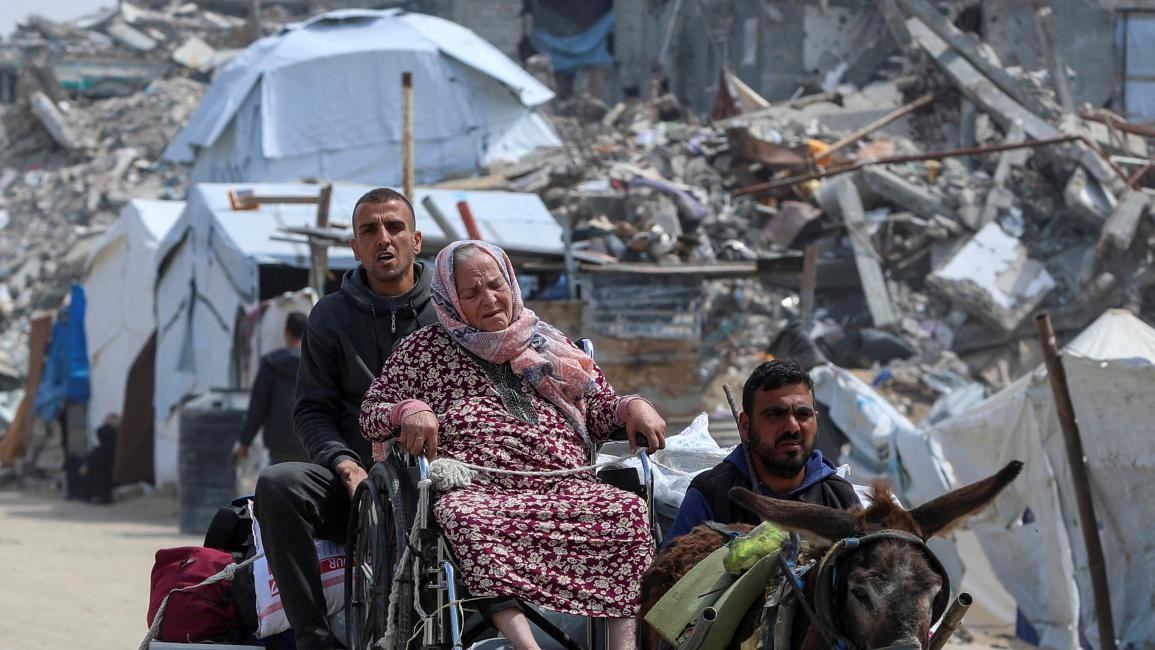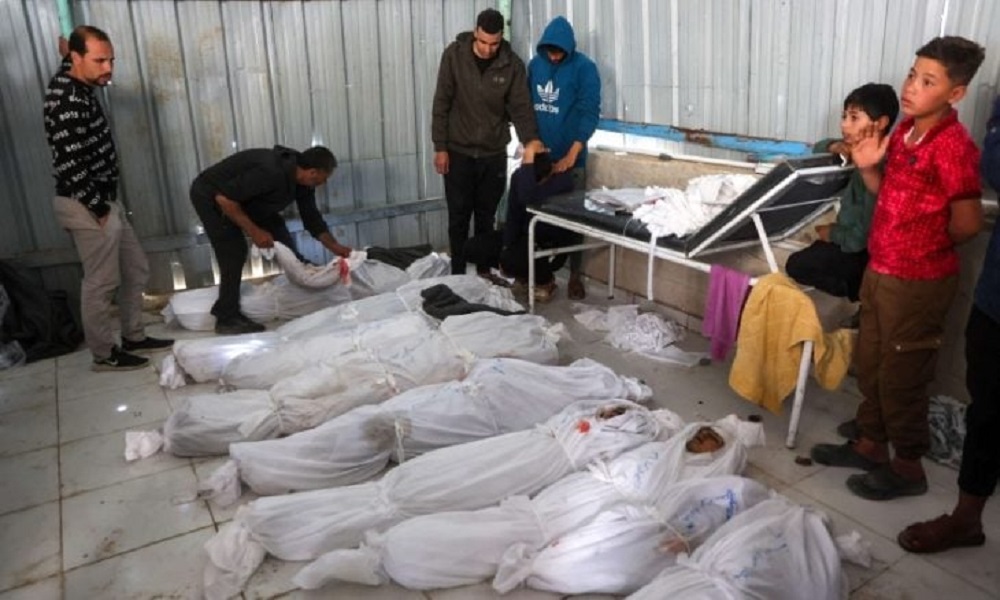Hebrew newspaper: Israel will subdue Hamas to its conditions through “Trump’s Hell”
Ground operations intensify in southern Gaza as Israel targets strategic corridors and ramps up airstrikes amid faltering negotiations.

Watan-The expansion of Israeli ground operations in the southern part of the Gaza Strip — alongside the evacuation of residents to the humanitarian zone in Al-Mawasi and the seizure of the “Morag” corridor that separates Khan Younis from Rafah — aims to increase pressure on Hamas leadership to comply with Israel’s demands regarding the hostages. It also serves to assist in a potential large-scale maneuver in the event negotiations fail.
In addition to the intensified operations on the Beit Lahia and Beit Hanoun fronts, the focused airstrikes throughout the Strip and the growing impact of the blockade on Gaza’s population are meant to push Hamas to agree to another release wave — involving a greater number of live hostages than it currently proposes — and without an Israeli commitment to end the war.
At present, Hamas’s behavior, at least outwardly, reflects concern about the situation — but not more than that. Hamas spokespeople accuse Israel of sabotaging the negotiations and emphasize — including in response to Israel’s recent actions — their willingness to reach an agreement.
In their view, the hostages in Hamas’s possession are their last remaining leverage to enforce their four core demands: an internationally guaranteed commitment not to resume fighting, the withdrawal of Israeli forces to the October 6 lines, a commitment to rebuild the Strip, and the release of additional prisoners from Israeli jails in exchange for the hostages, according to a mutually agreed framework.

Room for Flexibility Has Not Yet Been Exhausted
On the surface, Israel’s desire to retrieve the hostages while continuing the war seems in direct contradiction to Hamas’s interests. So, what is the basis for thinking that pressure could move Hamas to shift its position? Israel likely estimates that Hamas still has unexhausted flexibility, stemming from the large number of hostages it holds. That’s where current Israeli efforts are focused.
As for the internal situation in Gaza, one can assume that Israel’s actions will intensify public anger and possibly encourage protests against Hamas from segments of the population. However, hopes should not be exaggerated. The recent grassroots protests over the past two weeks have not posed a real threat to Hamas’s rule. The demonstrators are unorganized, without clear leadership, and lack the tools and means to escalate their struggle. Facing them is Hamas — a large, strong, trained, and armed force with the ability to suppress any group that poses a threat.

Israel Presses Advantage Against Hamas with Backing from Trump Administration
“The enemy will not achieve through war and destruction what it failed to achieve through negotiations,” vowed Izzat al-Rishq, a member of Hamas’s political bureau, as the current round of fighting resumed. It must be acknowledged: the challenge facing Israel is complex, but the alternative presented by Hamas — surrendering to its demands and allowing it to remain the central power in Gaza — severely limits Israel’s options.
Today, the conditions under which Israel is operating to achieve its goals are vastly better than they were at the start of the war: the backing of the Trump administration and the diplomatic shield it provides in the face of political and international institutions; the shift in the regional balance of power in the Middle East; the situation on other fronts; and the experience and confidence the Israeli military has accumulated.






